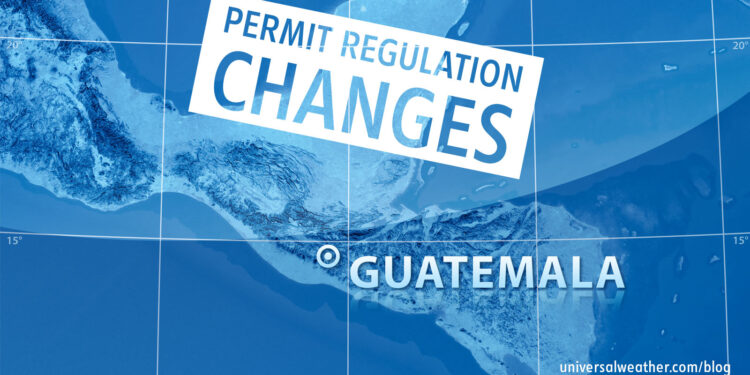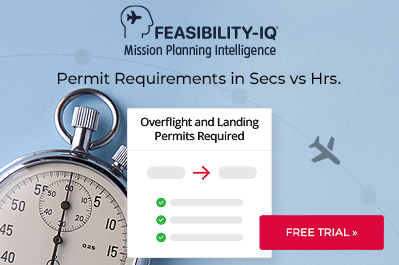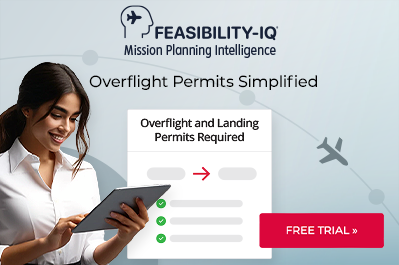Update for Operations to Guatemala: Landing & Overflight Permits

Guatemala recently revised its permit application process, and business aircraft operators must be mindful of these new and specific changes in order to avoid processing delays. As authorities are very stringent with both permit request procedures and lead times, it’s recommended that operators ensure they understand and comply with these new requirements.
The following is an overview of what you need to know when operating to Guatemala:
1. Permit requirements
Landing permits are required for all private non-revenue and charter (non-scheduled commercial) operations to Guatemala. Overflight permits, however, are only needed for flights below Flight Level (FL) 195. For overflight of Guatemala at or above FL 195, only a flight plan needs to be filed, along with notification to “CENAMER,” a joint air traffic control service covering Belize, Costa Rica, El Salvador, Guatemala, Honduras, and Nicaragua. It’s important to communicate intended FLs to your 3rd-party provider in order to obtain the appropriate permits when transiting this airspace.
2. Landing permit exemptions
Note that aircraft of less than 15,432 lbs. (7,000 kg) maximum takeoff weight, with registration numbers starting with “YS” (El Salvador), “HR” (Honduras), or “YN” (Nicaragua), do not require landing permits for Guatemala.
3. Regulatory changes
Direccion General de Aeronautica Civil (DGAC), the Civil Aviation Authority (CAA) of Guatemala, mandates that all operators landing or overflying the country, at or above FL 190, fill out a permit form – available at www.dgacguate.com. In the past this form could be completed by your 3rd-party provider. As of 2014, however, outside entities are no longer authorized to complete this form as it must be signed by the operator. A new form, clearly stating the requirement that the operator needs to fill it out, is expected to be introduced in 2015, but a firm date for that is not yet known. While it’s mandated that operators fill out and sign this form, it may be submitted to CAA via your 3rd-party provider. Be advised that permit applications will not be processed unless this form is completed, signed by the operator, and accompanied by all required documentation.
4. Submitting permit applications
All permit applications are submitted via e-mail, together with aircraft documentation. Information required includes aircraft type, registration and airworthiness certificates, worldwide insurance, aircraft owner and address, (rather than the operator address), and pilot licenses/medicals. Full names/nationalities of all passengers are also needed along with flight itinerary, origin, and destination. In addition DGAC wants to know the purpose of your flight, to determine if it’s a cargo flight or not. After you submit your permit request via e-mail, it’s recommended that you follow up to ensure the request has been received.
5. Permit confirmation
Once a permit is processed, a confirmation number will be provided. This must be placed in remarks section 18 of your International Civil Aviation Organization flight plan. In the case of landing permits, all appropriate documentation used to obtain the permit should be available onboard in case authorities request to review it.
6. Permit lead times
Permit lead times for Guatemala are three business days for landing requests and 24 working hours for overflights. These lead times are the same for both private non-revenue and charter flights. Other than air ambulance requests, which are processed on an urgent basis, DGAC normally adheres to official permit lead times. From time to time, short-notice requests may be processed, but this is at DGAC’s discretion.
7. Permit processing and revisions
Permit requests are processed by the DGAC Monday-Friday, during normal business hours. Once a request is received, DGAC will process it and contact the operator or 3rd-party provider if there are any questions. Permits are confirmed and valid for the Zulu day. For permit revisions be mindful that some requests are notification-only while others require permit revalidation. It’s best to confirm, with your 3rd-party provider, whether the particular revision requires a notification or a reconfirmation. Note that 3rd-party providers are permitted to submit permit revision requests to DGAC on behalf of the operator.
8. Overflight considerations
You’ll require additional overflight permits, in most cases, if you’re transiting the Central American region. Ensure that all appropriate permits based on your route are obtained in advance. The average lead time for the region is three working days, depending on the country.
9. Cabotage issues
Currently, there are no cabotage restrictions in place for Guatemala. This, however, could change at a moment’s notice. Be mindful that all passenger details, including nationalities of passengers, must be provided with all landing permit applications.
Conclusion
It’s important that permit requests for Guatemala are filled out and signed by the operator and that all required documentation is correct and submitted simultaneously with permit applications. It’s recommended that your 3rd-party provider be involved in this process, to ensure that all permit processing fees and navigation charges are addressed.
Questions?
If you have any questions about this article or would like assistance with obtaining permits for Guatemala, contact me at sherrellhare@univ-wea.com.




